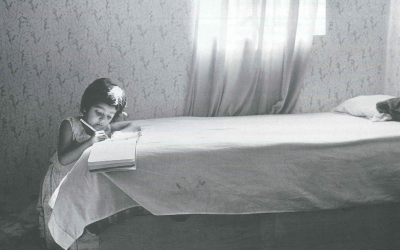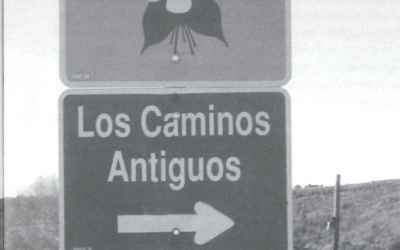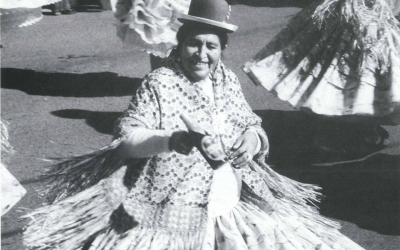Architecture and Tourism
As tourism and foreign business continue to grow and prosper in Havana, the rush is on to build new hotels throughout the city as quickly as possible. During my last trip to Havana, I saw three large hotel structures under construction, the result of Chinese, Spanish, and French joint ventures with the Cuban government. Undoubtedly more are underway, or at least on the drawing boards. Havana has a hot tourist trade, and the Cubans know that in order to satisfy the increasing demand for high-quality accommodations, more rooms must be built. Prior to this period of hotel expansion, it was the 1950s that saw the greatest number of new hotels constructed to accommodate the rapid growth in tourism, primarily due to the casino industry. During that period, three hotels of architectural note were built. Each are icons of mid-20th century Havana. All remain standing today as evidence of the triumphs and failures of international modernism. All three bear a strong resemblance to their Miami precedents and are on the “must see” list for any American tourist in Cuba.
The Havana Hilton, renamed the Havana Libre after the 1959 revolution, is the largest and, at first glance, the most garish of the group. Yet more careful consideration reveals there is much to be learned from the placement of this large building into the 19th century Havana neighborhood. The Capri Hotel is located two blocks from the Havana Libre and is about one-third its size, yet is far more disruptive to its immediate environment. The third hotel, the Riviera, is located away from the downtown on the Malecón, Havana’s equivalent of the Corniche, and is the most elegant of the group. Even in the world of Socialist Cuba, these hotels function as everyday tourist destinations and apparently are no longer thought of as being decadent or as representative of the excesses of pre-revolutionary Cuba.
As concerned Cuban architects and urban designers ponder the future of the central Havana urban fabric, currently threatened with high-rise tourist-related development, they need not look too much further then these three hotels for a list of dos and don’ts for future development. While these three buildings are at first glance a catalog of mediocre American inspired modernism, easily dismissed as the worst America had to offer, each contains valuable lessons in how the Cuban government might think about design review of larger scale developments.
Shortly after his triumphant march into Havana in early January 1959, Fidel Castro chose the one-year old Havana Hilton as the temporary headquarters of his revolutionary government. Castro, always politically savvy, knew well the irony and wisdom of such a move. This towering symbol of years of American intervention in Latin America was constructed in the final hours of the regime of the American supported dictator, Fulgencio Batista, and in those early months of “Patria o Muerte,” was the most important place in all Havana.
The Havana Libre, designed by Welton Beckett & Associates in the late 1950’s with the Cuban firm of Arroyo y Menendez, remains at the spiritual heart of much of the action in present day Havana. Its location on a hillside at the boundary of central Havana and the Vedado district guarantees physical prominence and high visibility from nearly all of Western Havana. This 630-room, 27-story slab tower has a surprisingly minimal impact on its immediate context despite being one of the city’s largest built projects. Urbanistically it is highly successful at the neighborhood scale. Its designers were clearly cognizant of the surrounding context with its conflicting urban design scales. The presence of the late 19th and early 20th century three-story buildings surrounding the site demanded a sympathetic low-rise architectural response, but the program demanded a high-rise solution. While this is not too different from a great deal of program-vs.-site-related conflict of 20th century urban America, it is frighteningly true of present day Havana.
To further complicate the matter, the Havana Libre sits astride La Rampa, the major street of mid-20th century Havana. La Rampa is a wide, sloping boulevard that was once the action center of the casino gambling and prostitution-filled days of the 1940s and 1950s. It appears that the designers of the Havana Hilton were well aware of their challenge. The result is a building complex that works surprisingly well at the level of urban design. The building occupies a full city block and is three stories taller at one end due to its sloping site. The architects chose to place the structure on a wide plinth to provide a level platform, an organizing datum line, on which to build their tower and to place shops at the street level below the plinth, thus providing a nearly continuous retail space at the base below the entry level to the hotel. The car/pedestrian entry is the built continuation of La Rampa onto the site, a brilliant urban design maneuver that intelligently connects the building with its pedestrian and vehicular surroundings.
By setting the tower back and above the plinth, the architects were able to provide a dramatic series of cantilevered roof structures at the two and three story level that align with the two and three story parapets of the neighboring structures across the street from the main entry. In fact, on this level, as well as at the level of the surrounding streets, one is hardly aware of the 27-story tower that is set back at another upper level far behind the actual entrance from the porte cochere. In this regard, the Havana Hilton provides a valuable lesson for the future large scale architectural interventions in Havana.
The second 1950s modernist hotel in downtown Havana is the Hotel Capri. It is located two blocks from the Havana Libre and was built in 1958 by New York mobster Santo Traficante. If the Havana Libre contains lessons of “what to do,” then the Hotel Capri, designed by the Cuban architect Jose Canaves Ugalde, is a primer on “what not to do.” The Capri contains a mere 216 rooms but is very cramped on its site. It is evident there is just too much program on too small a site. This alone should be a valuable lesson for present day urban designers and planners thinking about tourism in Havana. Even though the Hotel Capri is located on a corner site, it does not take full enough advantage of its street façade exposure on two sides. Instead the entries to its front lobby and nightclub are adjacent to each other on the same side. Furthermore, the Capri was built with no regard for its context and rubs against its neighbors most inelegantly. Where the Havana Libre is nearly brilliant in relating to its context, the Capri is an architectural bull in a china shop, out of place and out of scale.
On the other hand, and quite another matter, is the Hotel Riviera a few kilometers away along the Malecón, Havana’s equivalent of the Corniche. Opened in 1958 by Miami mobster Meyer Lansky, the Riviera caused quite a stir. Visitors gawked at its egg-shaped gold leafed casino while watching Ginger Rodgers in the nightclub’s opening act. It’s said that New York architect Philip Johnson proposed the original building design to his client, but that Johnson walked out on Meyer Lansky when his would-be client requested a taller building. As constructed, The Riviera is a stunning example of 1950s “Miami Beach” hotel architecture. It is a graceful building with cantilevered curved balconies and an articulated structural concrete frame. Its elegant green, gray, and black color motif blend well with the sea, sky, and the Malecón. The 17-story tower stands alone, very much as originally intended, on a wide traffic island adjacent to a well-to-do neighborhood. The Riviera is an object building that stands alone from its neighborhood context, and therefore, sets itself apart from its immediate urban environment. Its Miami inspired design, reminiscent of the late Morris Lapidus at his best, which alone gives the building a certain level of curiosity, fails to carry it along as a successful piece of urban design.
As Havana moves forward into the next decades, the government of Fidel Castro seems determined to develop economic joint ventures with foreign countries and businesses in support of Cuban style Caribbean tourism. The resulting construction boom has not yielded many quality hotel designs. For the most part what has been built is either too big, as is the case with the Spanish Melia Cohiba, or completely inappropriate for its site, as is the case with the Parque Central. These are buildings designed off-shore with little attention paid to their Havana sites or context. While there is a certain threat to the city inherent with this direction, Havana can learn from the design triumphs and failures of the Havana Libre, the Capri, and the Riviera. It may stand a chance yet, perhaps inspired by these three lesser known examples of 20th century modernism.
Winter 2002, Volume I, Number 2
Related Articles
Editor’s Letter: Tourism
Ellen Schneider’s description of Sandinista leader Daniel Ortega in her provocative article on Nicaraguan democracy sent me scurrying to my oversized scrapbooks of newspaper articles. I wanted to show her that rather than being perceived as a caudillo
Recreating Chican@ Enclaves
Centrally located between southern Colorado and northern New Mexico, is a hundred-mile long by seventy-mile wide intermountain basin known as the San Luis Valley. Surrounded on the east …
Tourist Photography’s Fictional Conquest
Recently, while walking across the Harvard campus, I was stopped by two tourists with a camera. They asked me if I would take a picture of them beside the words “HARVARD LAW SCHOOL,” …




